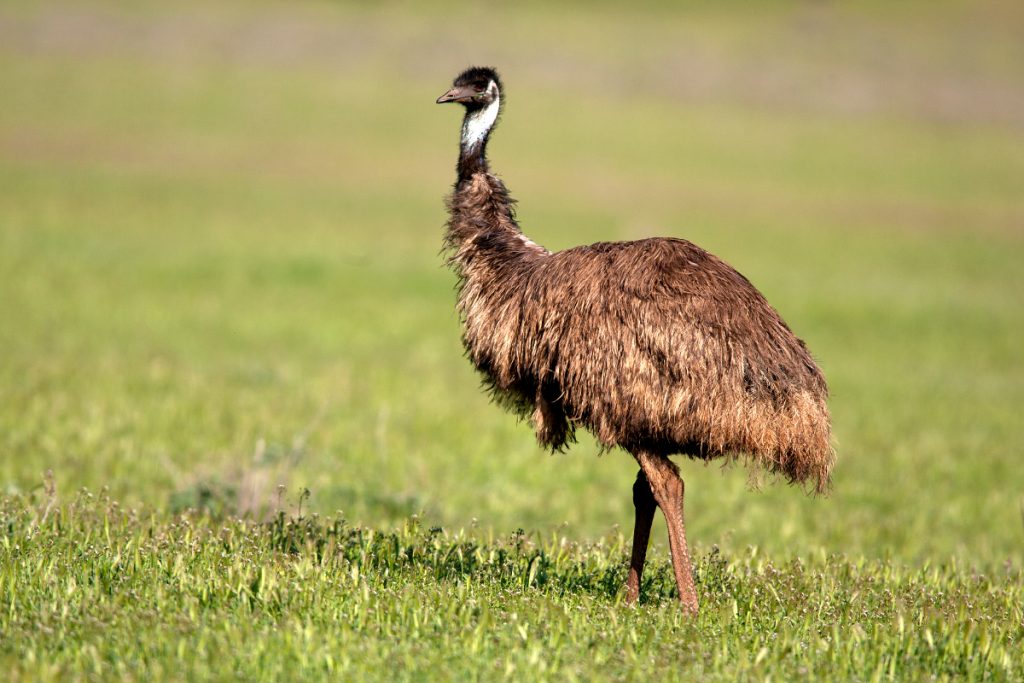Emus are omnivores and look for food during the day. They eat a variety of plants, depending on the season. For example, they eat acacia seeds until the rains come, and then eat new grass shoots and caterpillars. In wintertime, they feed on the leaves and pods of cassia. Springtime brings beetles, grasshoppers, and fruit. They also eat crickets, ladybugs, lizards, moth larvae, and ants.
The emu serves an important role in its habitat: seed dispersal specialist! Seeds eaten whole often come out whole; as the emu wanders about, it leaves fertilized seed-carrying deposits behind in its droppings.

Emus form breeding pairs in the summer and stay together through the fall, when the first clutch of eggs is laid. The male builds a rough nest of twigs, leaves, and grass on the ground where the female lays 5 to 15 avocado-green eggs over several days. When finished, the female wanders off, leaving the male to incubate the eggs.
It’s a good thing he ate extra food to build up his reserves of body fat before the breeding season! Why? He stays on the nest for the next eight weeks, getting up only to turn the eggs and tidy the nest. The male loses up to one-third of his body weight.















